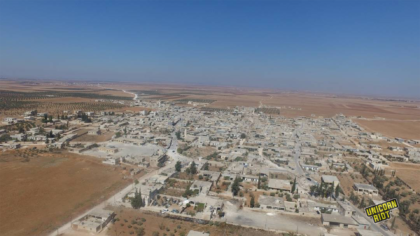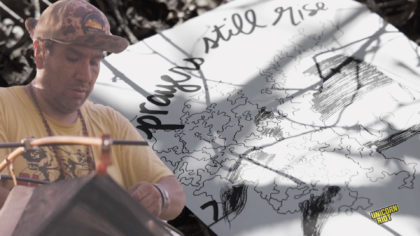Enbridge Ordered to Shutdown Line 5 and Pay Bad River Band $5.1M
Ashland, WI — Canadian oil corporation Enbridge has been ordered to shut down its Line 5 tar sands oil pipeline and pay the Bad River Band of the Lake Superior Tribe of Chippewa Indians $5.1 million. Chief Judge William M. Conley of the U.S. District Court for Wisconsin ruled on June 16, 2023 that Enbridge must adopt a more conservative shutdown and purge plan for its remaining time on the Bad River Indian Reservation.
Water protectors gathered on the day of the ruling in Ashland, Wisconsin to demand the immediate emergency shutdown of Line 5. Unicorn Riot heard from water protectors on the state of the Line 5 fight and why they actively protest.
What is Line 5?
The Line 5 pipeline was built in 1953, stretches for 645 miles and is operated by Canadian oil giant Enbridge. From western to eastern Canada, it transports up to 23 million gallons of crude oil and natural gas liquids daily. Although 90 percent of the oil is delivered to Canada, the pipeline cuts across Wisconsin and Michigan. The total pipeline system transports 2.85 million barrels of oil per day (Barrels Per Day – one barrel = 42 U.S. gallons) which is 119,700,000 gallons per day.
Since Line 5 became operational in 1968, the pipeline has spilled at least 1.1 million gallons of oil along its route in at least 33 spills, according to the Michigan Environmental Council.
In addition to crossing hundreds of interconnected waters, Line 5 crosses treaty-reserved territory of tribal nations such as the Bay Mills Indian Community in Michigan and the Mashkiiziibii, Bad River Band of Lake Superior Chippewa in Wisconsin.
With 84 percent of North America’s surface freshwater contained in the Great Lakes, Line 5 poses a direct threat to these lakes. The Great Lakes include Lake Michigan, Huron, Erie, and Ontario; Lake Superior, which borders Minnesota, Wisconsin, Michigan, and Canada, was the site of genocidal acts against the Indigenous populations by the U.S. Government.
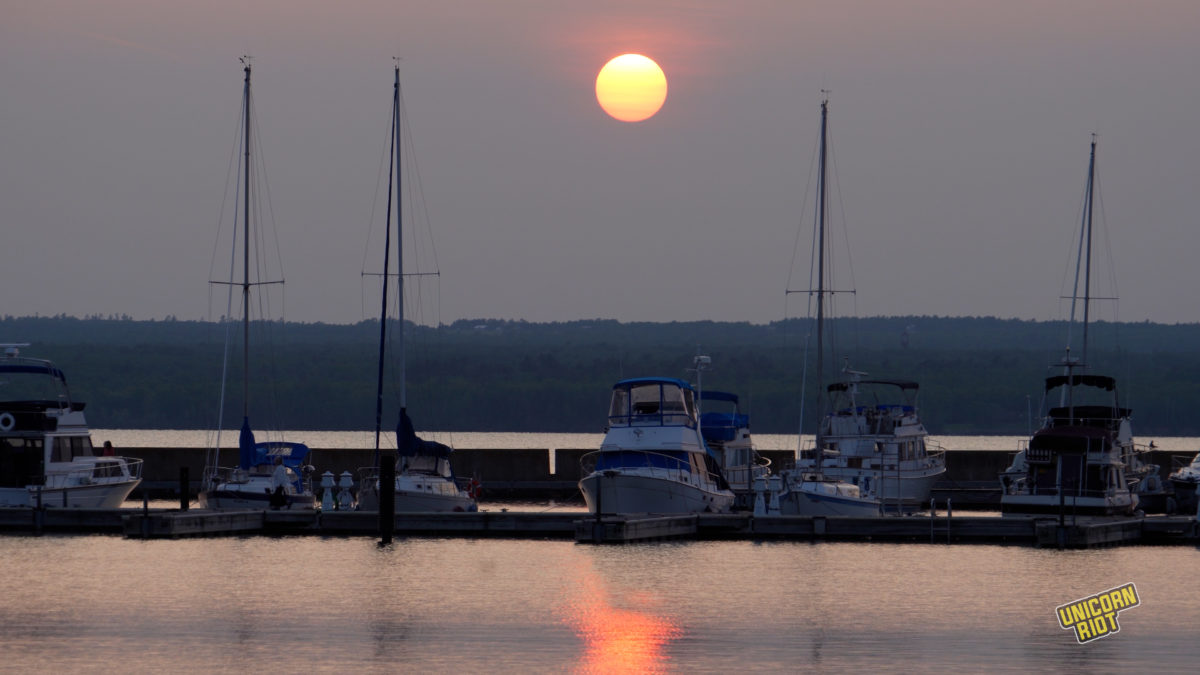
The Mainline system comprises Lines 1, 2, 3, 4, 5, 6, 7, 10, 11, 14, 61, 62, 64, and 67. Other pipelines that connect to the system, but are not part of it, include Line 9 (Montreal to Sarnia), Line 17 (Stockbridge to Toledo) and Line 55 (Flanagan to Cushing).
Line 5 pipeline is 30 inches in diameter and at the Straits of Mackinac in Michigan, it crosses under Lake Superior in two separate pipelines.
For more on Line 5, see a presentation prepared by Andy Pearson, a senior pipeline resistance organizer at MN 350, a climate justice 501(c)(3) organization. Slides in the presentation below give an overview of Enbridge’s mainline and construction history of the pipelines.
Ojibwe Spiritual Center
Nearby Ashland is Madeline Island, the spiritual center for many Ojibwe (Anishinaabe peoples). Past prophecies, including that of the Red Cliff Ojibwe, state that a sacred shell would guide Anishinaabe peoples west on a generations-long journey with seven stops along the way. One of the stops would be to the place where the food that grows on the water, maa-no-min (wild rice). The seventh stop was at what’s now called Madeline Island, named in honor of an Anishinaabe woman Ikwesewe, the wife of a French fur trader who established the first fort and colonist settlement there.
After Europeans colonized the territory, several treaties were signed in the mid-1800s between the colonizing settlers and the Ojibwe bands, or tribes, of the territory. Reservations were then established through the treaties, agreements, or executive orders by the U.S. government as land areas set aside for the use and occupation of a specific tribe or tribes of Native Americans. Tribal governments typically have some degree of sovereignty and self-government within the boundaries of these reservations, which are typically held in trust by the federal government.
Both the Red Cliff Ojibwe and Bad River Ojibwe Reservations in Wisconsin sit next to Line 5.
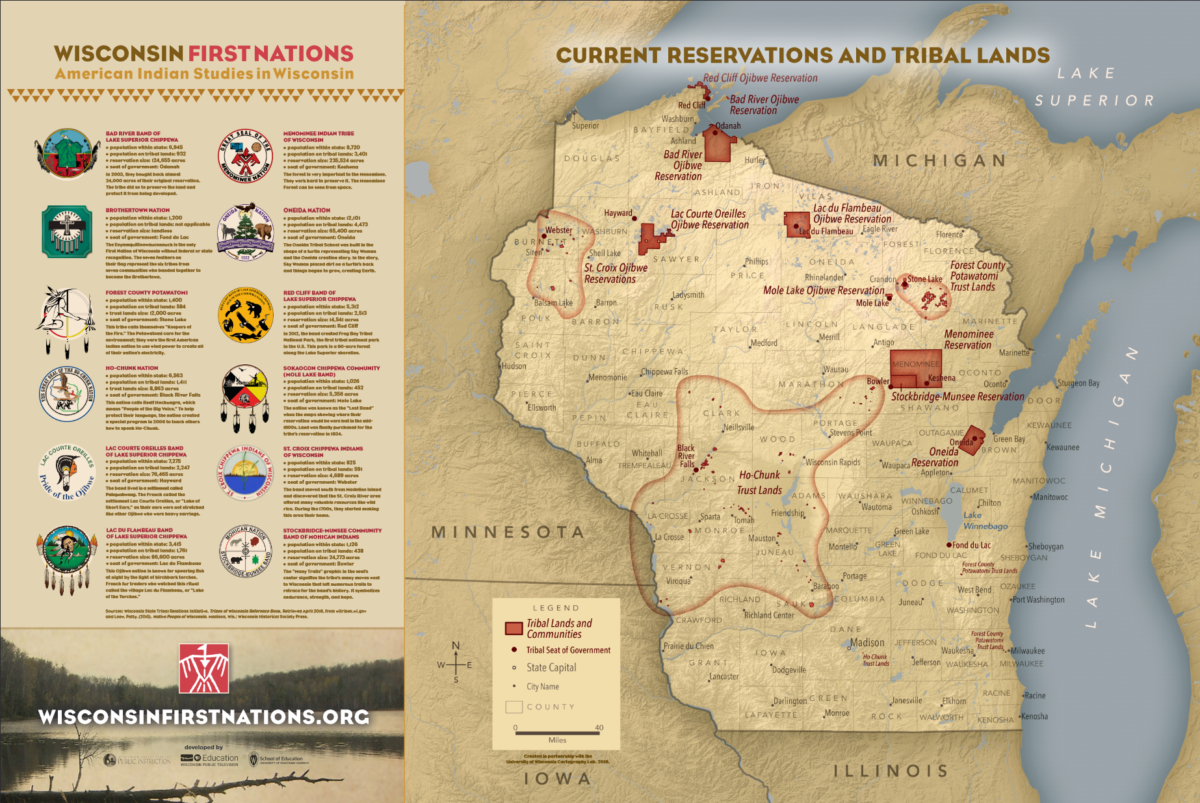
The Lawsuit / Order to Shutdown Line 5
The judge’s three-year plan is not a full shutdown of Line 5, but rather it initiates a reroute of the pipeline around the Bad River Reservation with the construction and removal of Line 5 while setting payments equal to the time Enbridge continues to trespass on the reservation territory in this timeframe.
Judge William M. Conley of the U.S. District Court for Wisconsin reasoned that Enbridge was guilty of trespassing after looking at consent and approval from the BIA and the Bad River Band on giving Enbridge easement over the parcels wholly or partially owned by the Band.
In 1952, Enbridge was granted a 20-year easement and renewed for 20 more years in 1972, then in 1992 Enbridge pushed for a 50-year easement over 13 parcels, with the terms being that they be wholly owned by the band and nothing more.
The Bad River Band holds sovereign power to disengage with the agreement and also to exclude Enbridge from parcels of land acquired after the agreement was signed.
The Band views Line 5 operating in its lands a danger to the environment and health of the communities that reside there, and ultimately they would be in operation without the BIA’s approval given the easement expired in 2013.
Bad River Band Responds to the Shutdown Order
On June 19, 2023 the Bad River Band responded to the Line 5 shutdown order via a press release:
“Activists say that the damages assigned to Enbridge won’t be a deterrent to fossil fuel companies trespassing on tribal land as the penalties are pennies in comparison to the profits from commercial pipeline operations. Within the 3 years Enbridge is to prepare their reroute, there could be a catastrophe like the million-gallon oil spill into the Kalamazoo River in Michigan in 2010, which remains one of the largest inland oil spills in American history. Additionally, when the reroute is complete, Line 5 could still have an effect on neighboring still-connected bodies of water.”
Bad River Band press release
As of June 30, Enbridge has appealed the court order and stated, “Enbridge’s position has long been that in a 1992 contract between Enbridge and the Band, the Band consented to operations of Line 5 on the Reservation through 2043,” according to the Michigan Advance.
Unrelated to the Bad River Band’s lawsuit, Michigan Governor Gretchen Whitmer has been attempting to get Enbridge to comply with her orders to shut down Line 5 over concerns for the environmental safety of the Straits of Mackinac in the Great Lakes area. All twelve of Michigan’s federally recognized Tribes have passed resolutions calling to decommission Line 5.
Water Protectors Gather in Ashland, Wisconsin
On June 16, 2023, local residents and allies of the Bad River Band of Ojibwe gathered at Memorial Park in Ashland, Wis. to call for an immediate emergency shutdown of Line 5.
Water Protectors gathered along Lake Shore Drive with banners and signs reading “Imminent Oil Disaster In Lake Superior #ShutDownLine5” and “We Stand in Solidarity With The Bad River Band | Shut Down Line 5.”
Cars drove past the public displays, some honking in support. Later, there was an unveiling and exhibition of a large six foot tall by 48 foot long banner of a mural called “We Stand.”
According to the artists, the mural “was created in the Superior lakeshore community with dozens of people participating in its creation, ages 8-94.” The banner featured many recognizable activists within the NoDAPL, Line 3, and Line 5 movements.
Water protectors marched down Lake Shore Drive with five to six people holding up red and black poles connected to the 48 foot long banner. They stopped briefly looking towards the direction of Lake Superior for a few minutes before returning to Memorial Park.
The banner was then taken atop a large hill at a ski resort on the following day, creating a photo opportunity for media which included local videographers and a drone operator.
Tribal Chair of the Bad River Band of Lake Superior Chippewa, Mike Wiggins, said in a press release before the planned weekend actions that they feared that “just one storm” could cause irreparable damage to the Mashkiiziibii (Bad River):
“At this moment, just one more storm could expose the oil pipeline to the river’s current, and we could experience a release of oil akin to what happened in the Yellowstone River in 2011 or the Arkansas River in 2013.”
If the Line 5 oil pipeline were to rupture it would greatly affect the Bad River Band’s fisheries, sloughs, and the masses of wild rice growing along the area, impacting the livelihood of thousands of people.
Sandy Gokee told Unicorn Riot that she came out to protest against Line 5 to make sure her “children have water.”
“That’s why I’m here on Earth and [I’ll] do what it takes to make sure that our children have water, their children, seven generations we were thought of by these treaty signers. We are going to make sure just like they held on to this place for us they held on to ceded territory they held on to the north end of the island, they held on to our rice beds, and our fisheries, so that we can live, and we can’t live if it’s inconsumable. We have everything we need to live life on this earth. Without Line 5, without corporations.”
While in Ashland, the Chairman of Honor the Earth Paul DeMain said Enbridge has several lawsuits against them and Line 5, including the state of Michigan, the Bad River Tribe, and the Bay Mills Indian Community.
“There’s lawsuits by the state of Michigan, in the Mackinac Straits against the tunnel project, which Enbridge wants to put in to extend the life of this decrepit pipeline that has a lot of anomalies. They have a lot of integrity digs and do a lot of replacements on it already. There’s a lawsuit by the Bad River Tribe to remove that line from their property and quit the trespass that they’ve been committing for the last five years. Bay Mills, I think has a lawsuit against them. So, there’s a lot of actions on this line, one of the most unnecessary lines that a foreign corporation owns in the United States.”
Paul DeMain, Chairman, Honor the Earth
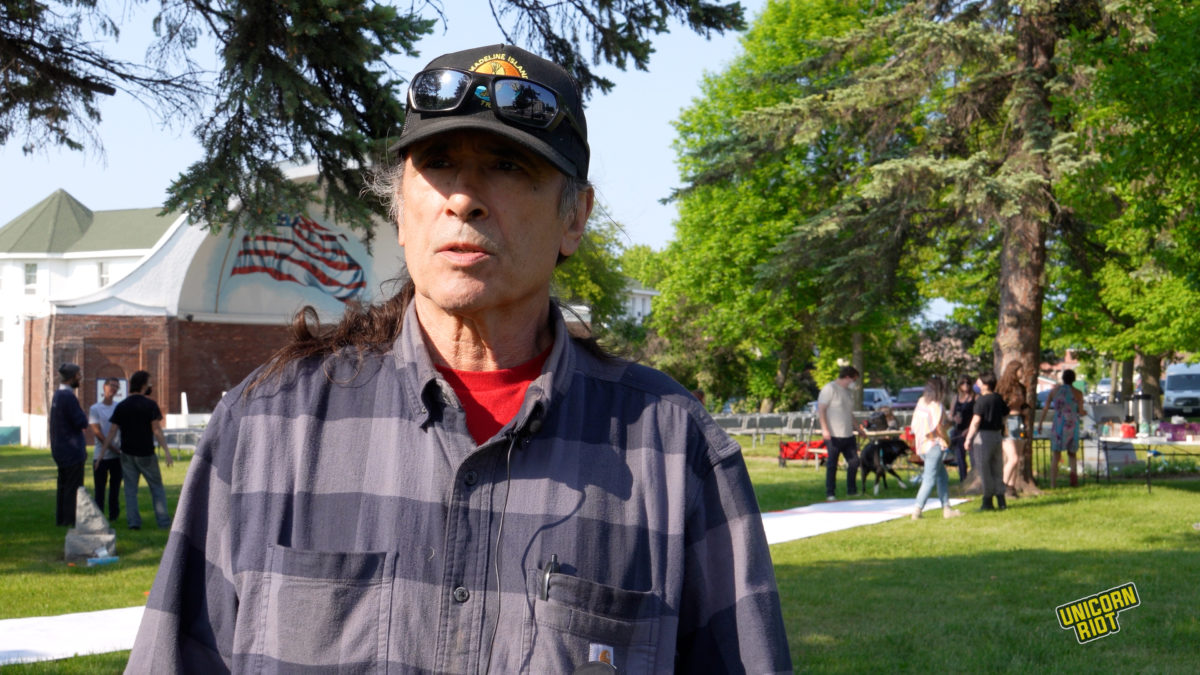
Monetary Breakdown of $5.1M Ruling
An ongoing payment on a quarterly basis would be in effect during the three years Enbridge’s Line 5 is in operation on the Bad River Reservation, as well as clean-up and remediation of the site which includes removal of the physical pipeline within the reservation area. Enbridge was ordered by District Judge Conley to pay the Band $5.1M.
The calculation used to obtain the $5.1M number above was given as follows:
- Calculate after-tax income for the Lakehead System, minus 22 percent of the depreciation taken for the Lakehead System.
- Multiplied by the sum of the natural gas liquids (NGL), and liquified petroleum gas (LPG) allocation factors (which are calculated from the percentage of product traveled on Line 5) yields ‘after tax net-income of Line 5 minus 22% Lakehead System depreciation.’
- The pro-rated income is calculated from the 2.33 miles of Line 5 that runs through the Bad River Reservation out of the total 642 miles of Line 5. Which is 0.36% out of 100% of Line 5 that runs through the 12 parcels on the Bad River Reservation.
- Finally, the Band’s share of Line 5 income equals the pro-rated income for 2.33 miles of Line 5 multiplied by the band weighted average share of 12 parcels (divided by 100) which is the weighted average percentage of ownership of the 12 parcels by the Bad River Band.
This calculation is done for the years 2013 through 2022, which adds up to be $3,030,075, applying the discount factor each year (weighted average cost of capital) equaling $4,410,969.
The remaining $740,699 is calculated from the three years of cost-avoidance and savings accrued from delaying construction of rerouting Line 5 from October 24, 2022 to December 31, 2025. This savings number is provided by Dan Leistra-Jones, the Band’s expert, and account for “ongoing cost-avoidance” to those parcels. The saving total of $740,699 added to the $4,410,969 court order equals a total of $5,151,668 to be awarded to the Bad River Band.
“The court will… require Enbridge to disgorge $740,699 to account for its ongoing cost-avoidance as to those parcels, calculated by multiplying the Band’s average ownership interest of 69.455 percent in the 12 parcels by .36 percent (2.33/642 miles) of the $296,234,750 savings figure proposed by Leistra-Jones.”
Enbridge is ordered to cease oil flow and decommission Line 5 from the 12 parcels within three years:
“At the expiration of three years from the date of this order, therefore, Enbridge must have decommissioned Line 5 on the 12 affected parcels, as well as arranged removal of any sidelined pipe and remediation of area.”
Chief Judge William M. Conley of the U.S. District Court for Wisconsin
Additionally the Band will be awarded profits on a quarterly basis from the formula used to calculate the amount that should be awarded from Enbridge’s Line 5 past trespass on the Bad River Reservation.
On August 5, 2023, activists are planning a Rally and Flotilla action on the “Long Bridge” over Fish Creek on US-2 highway in Ashland, Wis.
Follow us on X (aka Twitter), Facebook, YouTube, Vimeo, Instagram, Mastodon, Threads, BlueSky and Patreon.
Unicorn Riot's Line 3 Oil Pipeline Coverage:
- Landing Page for all Unicorn Riot Line 3 Resistance Coverage
- Minnesota Attorney General Keith Ellison Speech Disrupted by Water Protectors - October 8, 2021
- Over 50 Line 3 Pipeline Protesters Arrested Outside MN Governor’s Residence - September 22, 2021
- Police Break Up Ceremony and Indigenous-Led #StopLine3 Occupation - August 31, 2021
- Hundreds March from Governor Residence, Urge Chase Bank Defund Line 3 - August 31, 2021
- First Trial from Treaty People Gathering Ends in Acquittal - August 23, 2021
- Line 3 Opponent Sentenced to Thirty Days in Jail - August 19, 2021
- Enbridge Spills 10,000 Gallons of Line 3 Drilling Fluid - August 16, 2021
- Line 3 Fusion Center Data Declared Secret - August 4, 2021
- Judge Orders Sheriff to Halt Harassment of Line 3 Resistance Camp - July 24, 2021
- Water Protectors Occupy Work Sites and Lock Down to Line 3 Pipeline Construction - July 1, 2021
- Hubbard County Barricades Private Property, Imprisons Water Protectors - June 28, 2021
- Indigenous-Led Blockades Occupy Line 3 Pipeline Sites - June 10, 2021
- Rising Up to the Heat: ‘Treaty People Gathering’ Resists Line 3 Pipeline - June 7, 2021
- Activists Serve Denver Wells Fargo Eviction Notice - May 3, 2021
- Appealing Line 3 Pipeline: Supply and Demand at Root of Hearing - March 23, 2021
- Caravan Disrupts Line 3 Construction Routes, Carlton County Triggers Backlash - March 13, 2021
- Treaty Rights Asserted During Creation of White Earth Camp - March 13, 2021
- 70 Water Protectors Cited, 1 Arrested During Line 3 Commemorative Rally - March 4, 2021
- Bipod and Car Blockade Jam Up Line 3 Construction - March 2, 2021
- Three Lock Down Inside Line 3 Pipeline For 6+ Hours - Feb. 21, 2021
- Lockdown to Keep it in the Ground: Line 3 Resistance - Feb. 15, 2021
- Court of Appeals Denies Motion to Stop Line 3 - Feb. 3, 2021
- Opposition to Line 3 Mounts - Jan. 29, 2021
- Resistance to Line 3: Direct Actions Aim to Stop Construction - Jan. 11, 2021
- Enbridge Line 3 Construction Blocked by Activists in Northern Minnesota - Nov. 18, 2020
- Protests After Permits for Line 3 Oil Pipeline Approved - Nov. 17, 2020
- ‘No KKKops, No Pipelines’ Banner Dropped in Minneapolis - Oct. 6, 2020
- “Divest from Climate Change!” Chase Bank Branch Protested on Opening Day - Nov. 7, 2019
- March to Protect The Sacred on Indigenous People’s Day 2019 - Oct. 14, 2019
- Hundreds Rally in Opposition to Line 3 Tar Sands Pipeline in Minnesota - Sept. 28, 2019
- Direct Action in Minnesota as Line 3 Pipeline Approval Reversed - June 3, 2019
- Multi-Agency Task Force Prepares “Rules of Engagement” For Line 3 Protests - Feb. 11, 2019
- ‘Valve Turners’ Shut Down Enbridge Oil Pipelines in Minnesota - Feb. 4, 2019
- Arts, Culture, and Hip Hop Resist Line 3 as Lawsuits Against Approval Continue - Dec. 29, 2018
- Minnesota Police Train at Military Base as Line 3 Pipeline Protests Escalate - Oct. 25, 2018
- Judge Accepts Water Protectors’ Climate Change Necessity Defense - July 18, 2018
- Line 3 Oil Pipeline Approved By Minnesota Regulators - June 28, 2018
- As Line 3 Oil Pipeline Decision Looms, Indigenous Resistance Increases - June 26, 2018
- Interfaith Community Delivers Letter of Line 3 Opposition to Minnesota Government Offices - June 4, 2018
- Minnesota Public Utilities Commission Requests Line 3 Schedule Change - Jan. 10, 2018
- Rally Against Line 3 Minnesota Pipe Yards - Dec. 11, 2017
- Resistance to Line 3 Pipeline Seeks to Save Sacred Manoomin - Oct. 9, 2017
- Direct Action Ramps Up Resistance to Line 3 - Sept. 18, 2017
Please consider a tax-deductible donation to help sustain our horizontally-organized, non-profit media organization:


